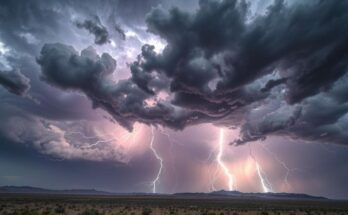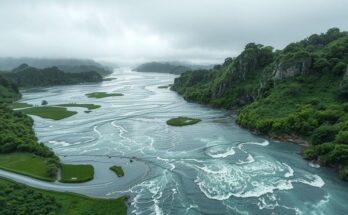South Africa is grappling with a severe water crisis, with 50% of potable water deemed lost to inefficiencies. Over 3 million people lack basic access, while significant health issues arise from poor sanitation. Agriculture is the largest consumer of water, and urgent improvements are needed in water management practices as many authorities are failing to comply with standards.
Water is an invaluable resource, and the South African Department of Water and Sanitation rightly emphasizes that it represents “life.” As World Water Day approaches, it becomes crucial to examine both the global and local conditions surrounding water availability. The following facts shed light on the serious water crisis in South Africa.
A staggering 50% of South Africa’s potable water is classified as Non-Revenue water, indicating significant losses in the system due to inefficiencies and leaks. Furthermore, over 3 million South Africans lack access to a basic water supply. Alarmingly, in Johannesburg’s informal settlements, 52% of residents have resorted to digging their own pit latrines for sanitation.
Globally, the repercussions of inadequate water access are profound. The United Nations Development Programme estimates that 443 million school days are forfeited annually due to illnesses arising from poor water supply. Tragically, the South African Human Rights Commission reports that 115 people per hour in Africa succumb to diseases linked to contaminated water and poor sanitation.
In terms of precipitation, South Africa endures 40% less rainfall than the global average. Interestingly, while the global average water consumption is 173 liters per person per day, South Africa’s average stands at 237 liters, which is noteworthy given its classification as a water-scarce nation.
The agricultural sector consumes 61% of the nation’s water, households account for 27%, and industry uses 7%, according to the Council for Scientific and Industrial Research (CSIR). Furthermore, the latest Blue Drop Report indicates that among South Africa’s 144 Water Services Authorities (WSAs), 24 made no efforts toward compliance, with 40 in a critical state.
The Water Services Act stipulates a minimum standard of 25 liters per person per day for basic water supply. During Cape Town’s stringent ‘Day Zero’ water restrictions, the average water usage dropped to 50 liters per person daily.
In summary, South Africa is facing a significant water crisis characterized by inefficiencies in water management and severe shortages. With 50% of potable water being lost through leaks, and millions lacking access to basic supply, the situation calls for urgent attention. Moreover, the reliance on water-intensive agriculture and inadequate sanitation measures exacerbates the public health crisis. Sustainable practices and infrastructure improvements are essential to address these challenges and secure water access for all South Africans.
Original Source: infrastructurenews.co.za




